Energy saving device for reduction of added resistance in waves: STEP
ENERGY SAVING DEVICE FOR REDUCTION OF ADDED RESISTANCE IN WAVES: STEP
"STEP" is an energy-saving device that reduces the added resistance due to waves acting on a ship navigating in actual seas. It is installed at the bow where the ship is exposed to waves. When a ship sails in a calm sea, the water surface around the hull rises (called static swell-up). However, STEP does not affect the resistance performance in a calm sea since it is installed above the static swell-up.

STEP reduces the added resistance in waves by changing the direction of wave reflection at the bow to the ship's width.
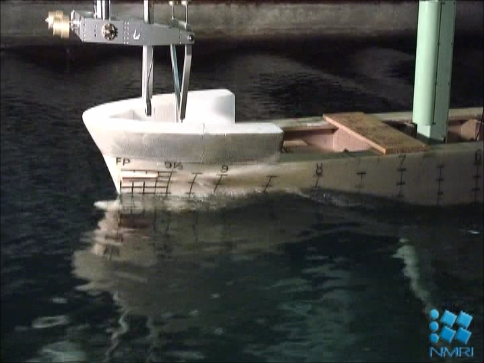
Here is a video of the tank test in waves.
(Click to view the video.)
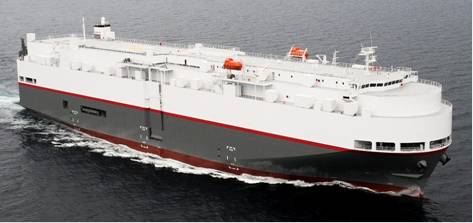
This is the first ship (5,000 car carrier) equipped with STEP.
Onboard measurements for a car carrier with STEP and on the same type of car carrier without STEP has been carried out to verify the effectiveness of the STEP.
The following chart shows a comparison of the relationship between speed and power (summer full load conditions, ±90 degrees from head waves). The variance in power rp due to STEP for the power in a calm sea (wave height less than 1 m) and for the power in waves (wave height greater than 2 m) is calculated, respectively. Since no waves hit STEP, rp in a calm sea (wave height less than 1 m) is considerd as the variation in measurement, and a power reduction effect of 3% (full load in summer, wave height greater than 2 m, directional waves ±90 degrees) due to the STEP has been confirmed.
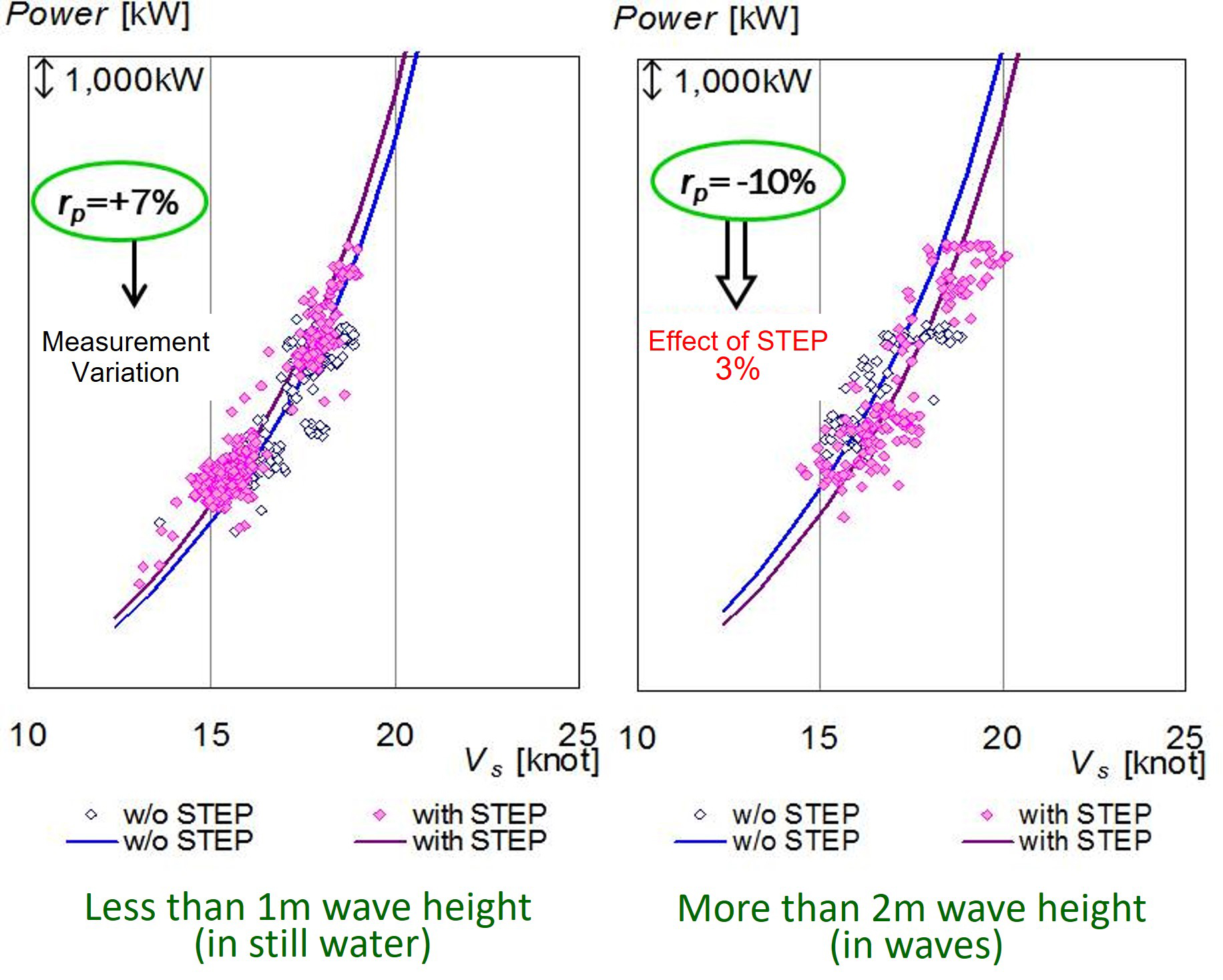
Relationship between speed and power obtained from onboard measurements
STEP can be installed on ships in service since it is a relatively small device,
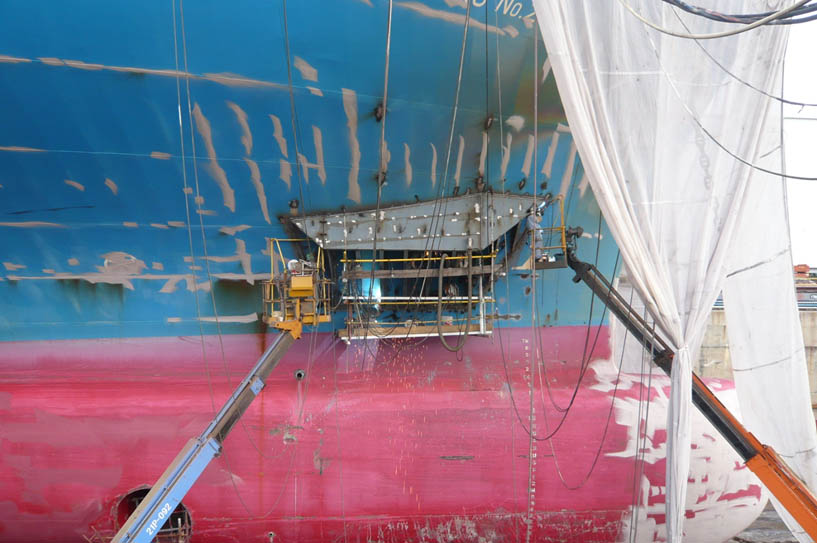
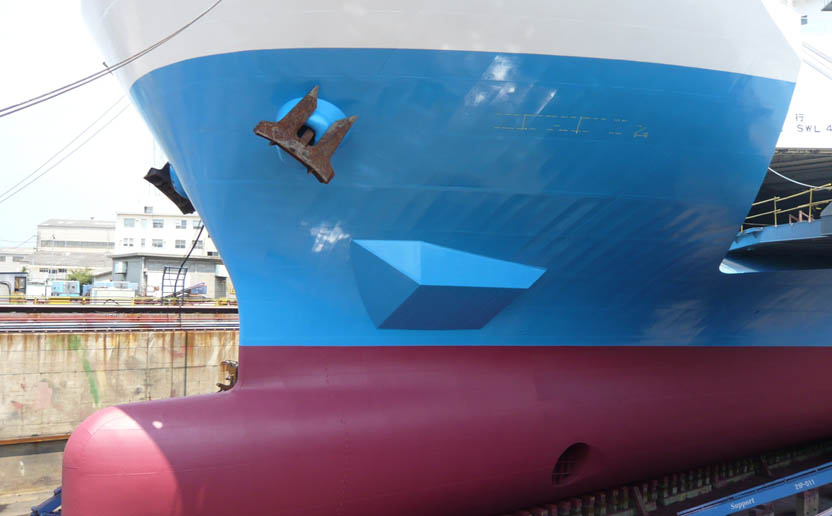
The installation (retrofit) construction of STEP on a ship in service.
References
- Kuroda, M., Tsujimoto, M., Sasaki, N., Omote, M., Nojima, N., and Kaga, M.: Effect of STEP for Reducing Added Resistance in Waves, Journal of the Japan Society of Naval Architects and Ocean Engineers, Vol. 14, pp105-110, 2011 (in Japanese).
- Kuroda, M., Tsujimoto, Shiraishi, K., M., Sasaki, N., Omote, M., Nojima, N., and Kaga, M.: Development of Energy Device STEP for Reducing Added Resistance in Waves for Pure Car Trunk Carrier, Journal of the Japan Society of Naval Architects and Ocean Engineers, Vol. 16, pp17-23, 2012 (in Japanese).
- Kuroda, M., Tsujimoto, M., Sasaki, N., Omote, M., Nojima, N., and Kaga M.: Development of STEP for the Reduction of Added Resistance in Waves, Proc. of ISOPE2012, Vol.3, pp.819-825, 2012.
- Kuroda, M., Tsujimoto, M., Sasaki, N., Naito, M., Omote, M., Nojima, N., and Kaga, M.: Evaluation of STEP for the Reduction of Added Resistance in Waves by Actual Ship Measurements, Journal of the Japan Society of Naval Architects and Ocean Engineers, Vol. 15, pp455-458, 2012 (in Japanese).
- Kuroda, M., Tsujimoto, M., Sasaki, N., Naito, M., Omote, M., Nojima, N. and Kaga, M.: Analysis on Onboard Measurement Data for the Validation of the Effect of the Energy Saving Device STEP, Proc. of PRADS2013, pp.346-351, 2013.
- Tsujimoto, M., Kuroda, M., Shiraishi, K., Sasaki, N., Naito, M., Omote, M., Nojima, N., and Kaga, M.: Development of Energy Saving Device for Actual Seas STEP, Papers of National Maritime Research Institute, Vol. 14, No. 2, pp45-63, 2014 (in Japanese).
- Tsujimoto, M.: Energy Saving Device in Actual Seas: STEP, Next Generation Ship Symposium -Attempt to Energy Saving-, Proc. of Kansai Branch Symposium of the Japan Society of Naval Architects and Ocean Engineers, pp88-92, 2015 (in Japanese).
The research and development of STEP was conducted in the collaborative research among National Maritime Research Institute, Nissan Motor Car Carrier Co. Ltd and Naikai Zosen Corporation, and based on the work supported by the Ministry of Land, Infrastructure, Transport and Tourism (MLIT) and the collaborative project with Shipbuilding Research Centre of Japan, and a grant from the Nippon Foundation through the Boat Race Grant and from the Nippon Kaiji Kyokai.
